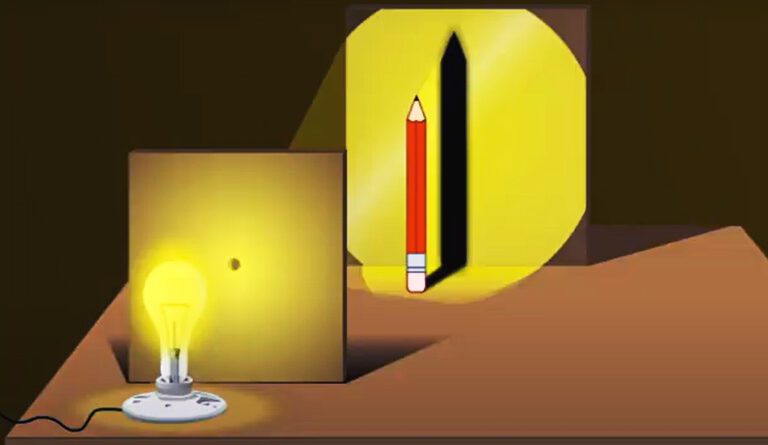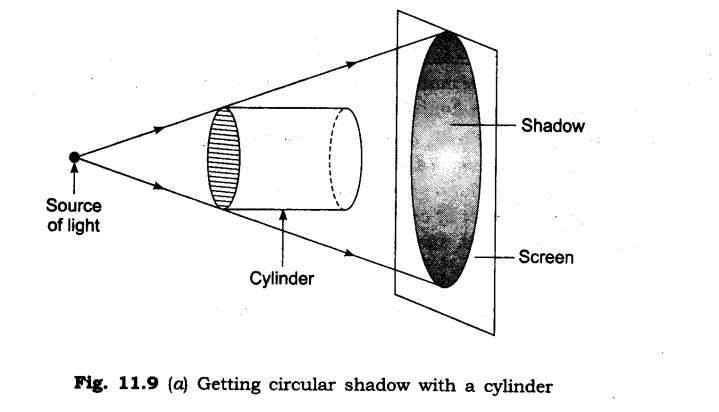Chasing Light: Exploring Shadows, Reflections, and the Magic of Visibility
Light Shadows and Reflections Experiment for Class 6
Curiosity Questions:
-
What happens to your shadow when the light source moves?
-
Can we really capture an image without a phone or camera?
-
Why do mirrors show images in reverse, but shadows don’t?
STEM Challenge Introduction:
In this exciting STEM challenge, we are going to explore the magical world of light, shadows, and reflections. Through hands-on experiments, you’ll discover how light behaves, how shadows are formed, and how images can be captured or reflected. You’ll also create a working pinhole camera using simple materials, test shadow sizes under sunlight and candlelight, and play with mirrors to understand how images appear. This challenge will help you see the invisible world of light in a brand-new way.
Materials Required:
Shadow Play:
-
A small toy or cut-out figure (10–15 cm tall).
-
A candle or torchlight.
-
Access to sunlight (outdoor space or near a window).
-
White wall or chart paper.
Pinhole Camera:
-
A small cardboard box (shoebox size).
-
Aluminum foil (10×10 cm).
-
White tracing paper or butter paper (15×15 cm).
-
Black paper or black paint (to darken the inside of the box).
-
Pin or safety needle.
-
Tape and scissors.
Mirror Reflection:
-
A small flat mirror (hand-sized).
-
A shallow bowl of water.
-
Torchlight.
Eco-Friendly Tips:
Use recycled cardboard, leftover butter paper from packaging, and repurpose an old toy or figurine.
Safety Precautions:
-
Use candles only with adult supervision and keep away from flammable materials.
-
Handle scissors and pins carefully.
-
Do not look directly into bright lights.
-
Ensure the mirror experiment is done with care to avoid breakage or sharp edges.
Step-by-Step Process:
1. Shadow Play Activity:
-
Place the toy or cut-out between a candle and a wall in a dark room.
-
Observe how the shadow changes as you move the toy closer or farther from the light source.
-
Repeat the experiment in sunlight and compare.
2. Make a Pinhole Camera:
-
Paint or line the inside of the box with black paper to reduce unwanted light.
-
On one end of the box, cut a small square (3×3 cm).
-
Tape a piece of foil over this square and carefully poke a tiny hole in the center.
-
On the opposite side, cut a larger square and cover it with tracing paper – this will be your screen.
-
Seal the box tightly except for the viewing side and go outdoors to point the pinhole side toward a bright object (like a tree or building). Look through the tracing paper screen.
3. Mirror Reflection Observation:
-
Place the mirror in a shallow bowl of water at an angle.
-
Shine a torch onto the mirror in a dark room and observe the reflected light pattern on a nearby wall or ceiling.
Expected Outcome:
-
You will observe clear and sharp shadows in candlelight and diffused shadows in sunlight.
-
Your pinhole camera will display an inverted image of the object on the tracing paper screen.
-
The mirror will reflect a pattern of light that may appear as a rainbow or a zigzag beam, depending on the angle and surface.
Observation:
-
How does the shadow size change with the distance between the object and light?
-
What did you notice about the image inside the pinhole camera?
-
Was the reflection in water steady or did it change with movement?
STEM Concepts Behind It:
-
Science: Light travels in a straight line. When an object blocks light, a shadow forms. Reflections occur when light bounces off smooth surfaces like mirrors.
-
Technology: The pinhole camera demonstrates how light can be used to project an image without a lens.
-
Engineering: Designing and constructing a functional camera with simple materials involves basic problem-solving and structural skills.
-
Math: Angles of reflection and object size vs shadow length relate to measurement and geometry.
Concept Elaboration:
This experiment brings together physics (light behavior), design thinking (building the camera), and observation skills (watching image and shadow behavior). When building the pinhole camera, students understand the principle of camera obscura, a precursor to modern photography. The mirror activity illustrates how refraction and reflection combine to create optical effects, similar to those in telescopes and microscopes.
Real-Life Applications:
-
Pinhole cameras are used in eclipse viewing and basic photography education.
-
Shadow studies help in stage lighting, architecture (sunlight planning), and even forensic science.
-
Reflection techniques are foundational in creating periscopes, laser systems, and medical instruments like endoscopes.
Your STEM Challenge:
Can you build a mirror maze where a beam of light reflects through at least three mirrors to hit a target point? Design the path on paper first, then set it up using household mirrors and a torch.
Think Further & Explore More:
-
What happens to your shadow at different times of day?
-
How do periscopes use mirrors to let us see over walls?
-
Can you design a solar oven using mirrors to focus light?
-
Explore how cameras today use digital sensors instead of a pinhole and screen.
Keep exploring how light reveals the hidden world around you!
Watch Here – Static Electricity Experiment Video
Click Here – Heat Experiment For Class 7


